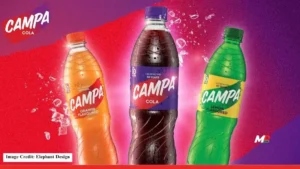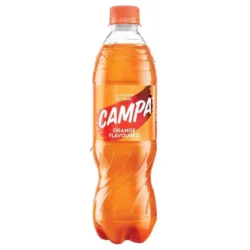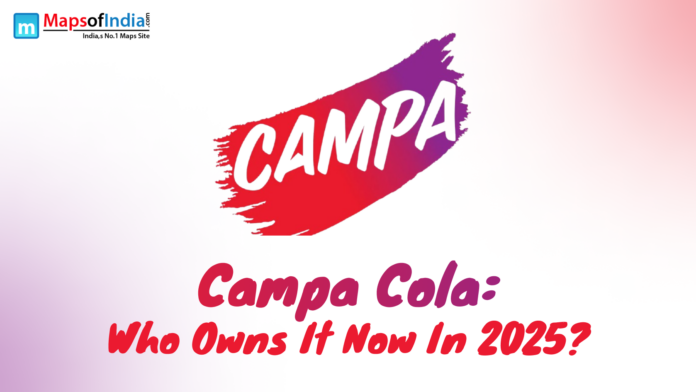Campa Cola: Who Owns It Now in 2025? Tracing the Legacy and Revival of India’s Iconic Soft Drink
The story of Campa Cola is a riveting saga of triumph, decline, and resurrection—a narrative deeply intertwined with India’s economic policies, cultural shifts, and corporate ambitions. From its inception in 1977 as a symbol of Indian self-reliance to its dramatic revival under new ownership in 2025, Campa Cola’s journey offers lessons in resilience, branding, and the power of nostalgia. This article explores the brand’s historical roots, its fall from grace, and its modern-day resurgence, answering the pivotal question: Who owns Campa Cola now in 2025, and how is it reclaiming its place in India’s competitive beverage market?
The Birth of Campa Cola: A Product of the License Raj Era
Campa Cola’s origins date back to 1977, a period marked by India’s License Raj—a regulatory regime that restricted foreign investment and promoted domestic industries. During this time, multinational corporations (MNCs) like Coca-Cola faced stringent regulations, including a mandate to dilute equity shares and reveal proprietary formulas. Refusing to comply, Coca-Cola exited India in 1977, leaving a gaping void in the soft drink market.
Seizing this opportunity, the Delhi-based Pure Drinks Group launched Campa Cola as a homegrown alternative. The brand’s name, derived from the word “campaign,” reflected its mission to champion Indian entrepreneurship. Its success was fueled by:
Affordability: Priced lower than imported sodas.
Localization: Flavors tailored to Indian preferences, such as Campa Lemon, Campa Orange, and Campa Soda.
Distribution Reach: Aggressive penetration into urban and rural markets via mom-and-pop stores (Kiranas).
By the 1980s, Campa Cola commanded over 30% of India’s soft drink market, rivaling Thums Up (another Indian brand) and Parle’s Gold Spot. Its iconic glass bottles and retro advertisements, featuring Bollywood stars like Amitabh Bachchan, cemented its status as a cultural icon.
The 1990s: Globalization and the Decline of Campa Cola
The 1990s marked a turning point for India—and Campa Cola. The country’s economic liberalization policies opened doors to global giants like Coca-Cola and Pepsi, who re-entered India with aggressive strategies:
Marketing Blitz: Coca-Cola’s “Thanda Matlab Coca-Cola” and Pepsi’s “Yeh Dil Maange More” campaigns targeted youth with glitzy ads and celebrity endorsements.
Distribution Dominance: MNCs invested in cold-chain infrastructure, ensuring their products were available even in remote areas.
Product Variety: Coca-Cola and Pepsi introduced diverse portfolios, from Diet Coke to Mountain Dew, overshadowing Campa’s limited lineup.
Pure Drinks Group struggled to compete. Campa Cola’s market share plummeted to single digits by the late 1990s. By the early 2000s, the brand had virtually vanished from shelves, surviving only in memories and occasional mentions of “the good old days.”
The 2020s: Reliance Industries Revives a Legacy
In 2022, Reliance Industries Limited (RIL), India’s largest conglomerate led by billionaire Mukesh Ambani, acquired the rights to Campa Cola. This move was part of Reliance’s broader strategy to dominate India’s fast-moving consumer goods (FMCG) sector, valued at over $100 billion.
Why Did Reliance Bet on Campa Cola?
Nostalgia as a Marketing Tool: Campa Cola’s legacy resonated with Indians aged 35+, who associated the brand with childhood memories and national pride.
Alignment with Atmanirbhar Bharat: The Indian government’s push for self-reliance created a favorable environment for homegrown brands.
Gaps in the Market: Despite Coca-Cola and Pepsi’s dominance, there was room for an affordable, “swadeshi” (indigenous) alternative.
By 2025, Reliance Consumer Products Limited (RCPL), a subsidiary of RIL, has transformed Campa Cola into a dynamic, modern brand while honoring its heritage.
Campa Cola in 2025: Ownership, Strategy, and Market Position
Current Ownership and Vision
By the end of 2025, Reliance Industries will acquire Campa Cola in its entirety and incorporate it into its wide-ranging FMCG portfolio, which also includes SnacTac, Happi, and Masti Oye. Reliance has two goals for Campa Cola:
- Short-Term: Capture 5-7% of India’s carbonated soft drink (CSD) market by 2026.
- Long-Term: Position Campa as a global “Made in India” beverage brand.
- Revival Strategies Fueling Growth
- Product Innovation
- Core Range: Now Campa Cola will use a reduced-sugar recipe to appeal to health trends.
New Variants:
A savoury, digestive beverage aimed at local palates is Campa Jeera Soda.
Campa Sparkling Water: Zero-calorie option for urban millennials.
Limited Editions: Seasonal flavors like Aam Panna (summer) and Adrak Shot (winter).
Modernized Branding
Packaging: Stylish PET cans and bottles with QR codes that connect to interactive materials (such as loyalty points and AR filters).
Advertising: Blends nostalgia with modernity. A 2024 ad featured Ranveer Singh dancing to a remixed version of Campa’s 1980s jingle.
Distribution Powerhouse Leveraging Reliance’s Infrastructure:
Retail Network: Available at 18,000+ Reliance Smart stores and 2 million Kirana partners.
E-Commerce: Prominent visibility on JioMart and quick-commerce platforms like Blinkit and Zepto.
Strategy for Pricing A 200 ml bottle of Campa Cola costs ₹12 in rural areas and ₹20 in urban areas, which is 15-20% less than competitors’ prices. In tier-2/3 cities, volume sales are driven by this affordability.
Digital Engagement
#MyCampaMemories: User-generated content campaign encouraging fans to share throwback stories.
Influencer Partnerships: Collaborations with food vloggers and fitness influencers to balance indulgence and wellness messaging.
Competitive Landscape: Battling Coca-Cola and Pepsi in 2025. Despite Reliance’s efforts, Coca-Cola and Pepsi control ~70% of India’s CSD market. Campa Cola’s differentiators include:
Cultural Connection: Positioned as “India’s Original Cola” in ads.
Political Tailwinds: Government tariffs on imported concentrate (30%) reduce rivals’ margins.
Hyper-Local Flavors: Regional variants outperform MNCs’ one-size-fits-all approach.
However, challenges persist:
Perception Issues: Some view Campa Cola as a “cheap” alternative.
Health Concerns: There is a Rising demand for functional beverages (e.g., kombucha, electrolyte drinks).
The Road Ahead: Can Campa Cola Sustain Its Comeback?
Reliance’s 2025 playbook includes:
- Export Ambitions: Pilots in Nepal, UAE, and Nigeria to test global appeal.
- Sustainability Drive: water-neutral factories and biodegradable bottles by 2026.
- Premiumization: Launching mixers (e.g., Campa Tonic Water) for upscale bars and restaurants.
Industry analysts predict Campa Cola could achieve double-digit market share by 2030 if it:
- Maintain affordability while improving brand perception.
- Expands into adjacent categories (e.g., energy drinks, packaged juices).
- Counters rivals’ deep pockets with agile, digital-first campaigns.
Conclusion: A Legacy Reimagined
The question “Campa Cola: Who Owns It Now in 2025?” is more than a query about corporate ownership—it’s a reflection of India’s evolving identity. Under Reliance Industries, Campa Cola has transitioned from a forgotten relic to a symbol of Atmanirbhar Bharat, blending heritage with innovation. Its revival underscores the potential of legacy brands in a modern economy, proving that with the right strategy, even phoenixes can rise from the ashes.
As Reliance reshapes Campa Cola’s destiny, the brand’s journey serves as a testament to the enduring power of nostalgia, the importance of adaptability, and the relentless ambition of Indian entrepreneurship.




